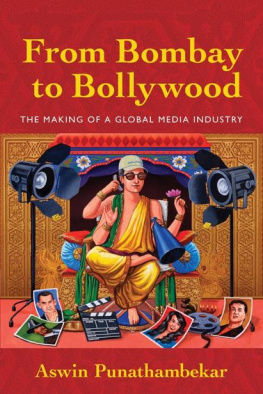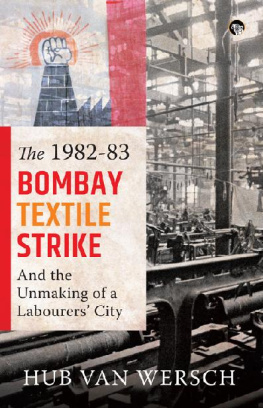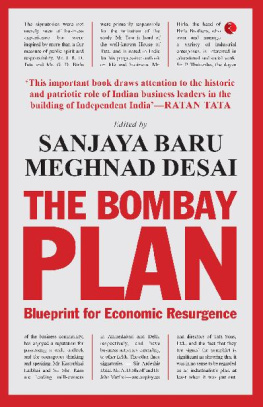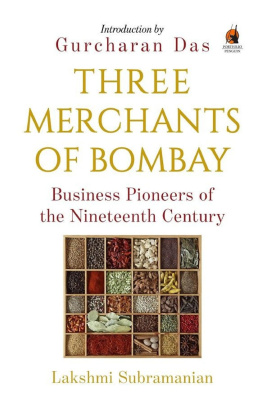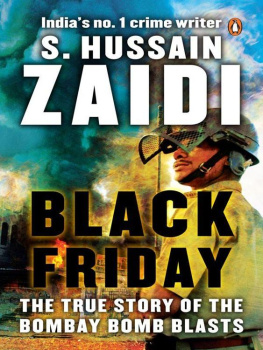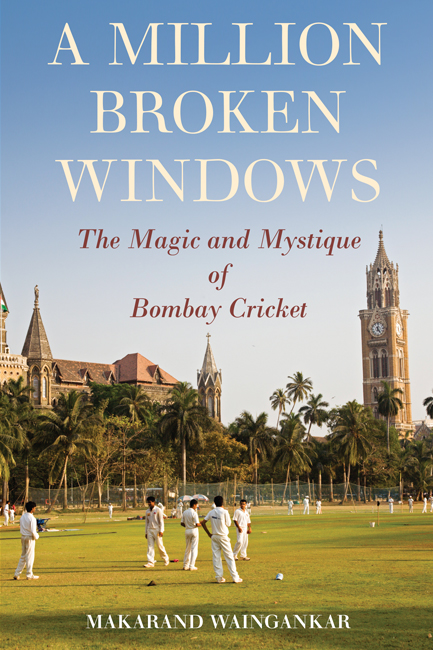
To all those tireless groundsmen, coaches and club secretaries who never get even a column centimetre of coverage in the media. Their dedication must not go unrecognized in the ups and downs of Bombay cricket.
Also, to Vasu Paranjpe and Ramakant Achrekar,
eternal mentors and master coaches whose contribution to Bombay cricket is immeasurable.
CONTENTS
E veryone who follows the game of cricket knows of the exploits of Bombay teams. While not everyone may be able to recall the precise numbers, connoisseurs of the sport cannot miss the contribution of Bombay to the cricketing traditions of India.
Bombay has won the Ranji Trophy forty times. Their closest competitors, Karnataka, come in at a grand total of seven. One-third of all of Indias international runs have been scored by batsmen who have come through the ranks of Bombay cricket. While these numbers may amaze the readers they may not be entirely unexpected, for the legends of Bombay cricket are part of the oral tradition of cricket followers not only from the city but across the country.
Following and reporting on Bombay cricket for nearly forty-five years now, I am impelled to share with the readers the narratives underlying the numbers. It is the story of a cricketing culture that is infused with the spirit of the city a city, whose way of living defined its way of playing so completely that its narratives are inextricably intertwined. Its way of playing eventually set the benchmark for the sport in the country and one that the rest would take decades to catch up with.
Hence the book begins by chasing the obvious question. What distinguishes Bombay cricket from the rest of India?
The underlying answers are anything but obvious. While the emerging picture maybe a telling narrative regarding the spirit of the game of cricket and cricketers, one will also find that the spirit of the players may not be distinguished from their individual characters. We will know that the city of Bombay inspired, challenged and hardened these players to not only achieve their individual best but also formed them to fight as a unit.
Telling the story of Bombay cricket invariably tells the tale of the city and the daily bother of living in the city experiences that shape the Bombaikar and in the process form a tenacious cricketer. It is the story of many young men whose grit and discipline opened new frontiers in the game, which today is one of the handful of elements that bind the country that is as vast and diverse as India.
Tales of individuals overcoming personal tragedies and challenges to participate in this grand tradition of Bombay cricket are abundant. What is significant is that the tradition of the sport in the city offered enough inspiration for these individuals to make such a journey. It is the camaraderie and ethos in the cricketing universe of Bombay that not only inspired individuals but also provided them solace.
Complementing these narratives are fascinating stories of how Bombay cricket managed to develop the right fundamentals. Their dedicated and planned practice sessions, their organized fielding practice, the vibrant and highly competitive club cricket, all these together developed an intense yet disciplined passion for the sport that was part of the cricketing air of the city; air that would nourish every young cricketer to come through its ranks.
Perhaps the Kanga League is the most demonstrative piece of evidence of this spirit of Bombay cricket. Once played only during the monsoon, the league was founded to counter the temperamental weather of England, which the players in the early part of the twentieth century had to endure. The rains of Bombay provided the perfect simulation with added benefits. The club structure of Bombay not only ensured fierce competition as players like Sunil Gavaskar, in their prime, hopped off airplanes on their way back from tours to head straight for the grounds, but on days the conditions proved truly unplayable, brought together the eclectic mix of retired, national and young players to exchange anecdotes. Cricket truly proved to be a way of life under the umbrella of the Kanga League in the rains of Bombay. It would not be incorrect to say the league was one of the mediums for sustaining the philosophy of Bombay cricket across generations.
While seasoning the narrative of Bombay cricket with narratives of the life in the city and the stories of individuals, as it is essential to understand the legacy of Bombay cricket, the book also takes a hard look at the on-field aspects of the sport, in chapters such as The Batting Gharana of Bombay and The Best Bombay XI.
As already mentioned, Bombays batsmen have been the pillar of Indian cricket for decades. While theories regarding the success of Bombay batsmen are abundant, the chapter Conversations on Cricket attempts to extract the insiders view regarding batting techniques and mindsets. After all, it is the city that has produced international-quality cricketers right from the early days of Vijay Merchant and Polly Umrigar, all the way to Sunil Gavaskar and Sachin Tendulkar. The book attempts to bring forth not only how such quality was achieved, with Bombay being the hub for the most technically sound batsmen, but also how that philosophy of playing was sustained for over half a century.
All these facts and stories together lead to an obvious question: what is the ultimate or the best Bombay XI? With players from across generations upstaging each other on the national and international stages, selecting the best Bombay XI is a truly difficult task. It is never enough to look at the numbers when one is grappling with a legacy. Each player faced different challenges, so it is not only the players individual styles that need to be pitted against each other but the environment in which those styles proved to be successful. This is a near-impossible task but the chapter The Best Bombay XI attempts do exactly this. This would never satisfy every connoisseur but hopefully will provide a window to the readers to participate in recalling the collective greatness of Bombay cricket as the best of the best from across eras are juxtaposed and discussed together.
However, the story of Bombay cricket is not intended to provoke internal debates. It is the tale of a ruthless competitive spirit that is complemented by an ethos that inspired camaraderie. All these elements together frame the story of Bombay cricket. The numbers come at the end as a result of these stories of human bonding.
Lastly, the book discusses some of the challenges Bombay cricket is currently facing, and the possible solutions for the same, with former players joining the discussion. It is this cricketing tale, which I have not only witnessed and reported on over the years but also cherished, that I would like to share.
W hat is it with Bombay? This entire book is a modest attempt to answer this question. How has Bombay managed to capture the imagination of Indians for all these years? Why does every dream story begin with Bombay and end with Bombay? The city of dreams they call it. But life is anything but easy here. Every moment here is characterized by struggle and strife. Roads are congested, trains are crowded and houses are small. Why then is Bombay called the city of dreams? This face of Bombay is not unknown, yet the city has not lost its tag.
Every day, hordes of people land on the platforms of Bombays two main railway stations to live the Bombay life. Film stars, cricketers, engineers, labourers and beggars Bombay is the dream destination for all of them. It is the place where dreams come true. Everyone wants to make it big; and make it big in Bombay. Everyone wants to transform their reality into the reality of their dreams. Everyone comes here, to this life of crowded trains, only in the hope of escaping it someday and making it to a life of luxury. Some do, many dont.
Next page



